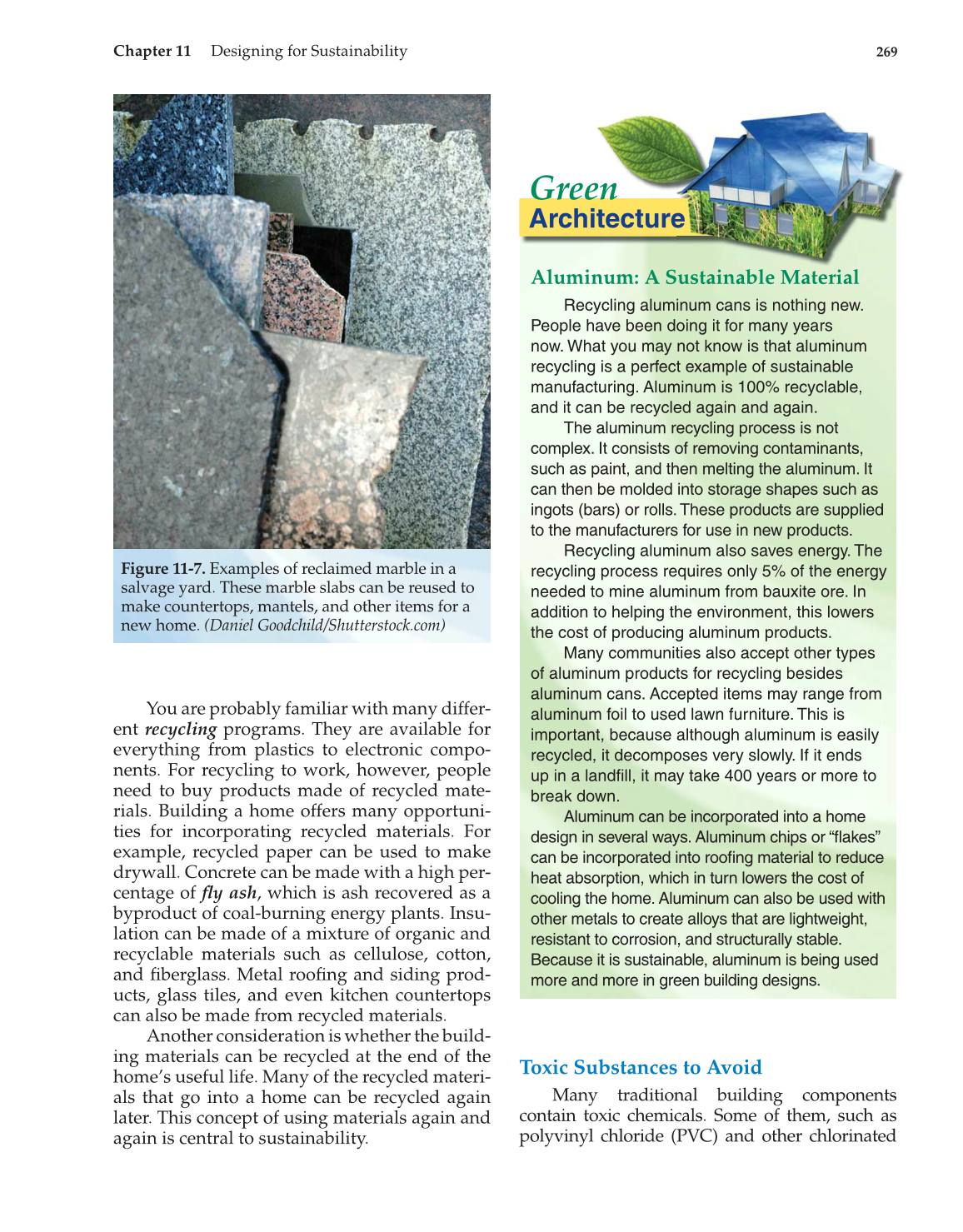269
Chapter 11 Designing for Sustainability
You are probably familiar with many differ-
ent recycling programs. They are available for
everything from plastics to electronic compo-
nents. For recycling to work, however, people
need to buy products made of recycled mate-
rials. Building a home offers many opportuni-
ties for incorporating recycled materials. For
example, recycled paper can be used to make
drywall. Concrete can be made with a high per-
centage of fl y ash, which is ash recovered as a
byproduct of coal-burning energy plants. Insu-
lation can be made of a mixture of organic and
recyclable materials such as cellulose, cotton,
and fi berglass. Metal roofi ng and siding prod-
ucts, glass tiles, and even kitchen countertops
can also be made from recycled materials.
Another consideration is whether the build-
ing materials can be recycled at the end of the
home’s useful life. Many of the recycled materi-
als that go into a home can be recycled again
later. This concept of using materials again and
again is central to sustainability.
Toxic Substances to Avoid
Many traditional building components
contain toxic chemicals. Some of them, such as
polyvinyl chloride (PVC) and other chlorinated
Figure 11-7. Examples of reclaimed marble in a
salvage yard. These marble slabs can be reused to
make countertops, mantels, and other items for a
new home. (Daniel Goodchild/Shutterstock.com)
Aluminum: A Sustainable Material
Recycling aluminum cans is nothing new.
People have been doing it for many years
now. What you may not know is that aluminum
recycling is a perfect example of sustainable
manufacturing. Aluminum is 100% recyclable,
and it can be recycled again and again.
The aluminum recycling process is not
complex. It consists of removing contaminants,
such as paint, and then melting the aluminum. It
can then be molded into storage shapes such as
ingots (bars) or rolls. These products are supplied
to the manufacturers for use in new products.
Recycling aluminum also saves energy. The
recycling process requires only 5% of the energy
needed to mine aluminum from bauxite ore. In
addition to helping the environment, this lowers
the cost of producing aluminum products.
Many communities also accept other types
of aluminum products for recycling besides
aluminum cans. Accepted items may range from
aluminum foil to used lawn furniture. This is
important, because although aluminum is easily
recycled, it decomposes very slowly. If it ends
up in a landfi ll, it may take 400 years or more to
break down.
Aluminum can be incorporated into a home
design in several ways. Aluminum chips or “fl akes”
can be incorporated into roofi ng material to reduce
heat absorption, which in turn lowers the cost of
cooling the home. Aluminum can also be used with
other metals to create alloys that are lightweight,
resistant to corrosion, and structurally stable.
Because it is sustainable, aluminum is being used
more and more in green building designs.
Green
Architecture
